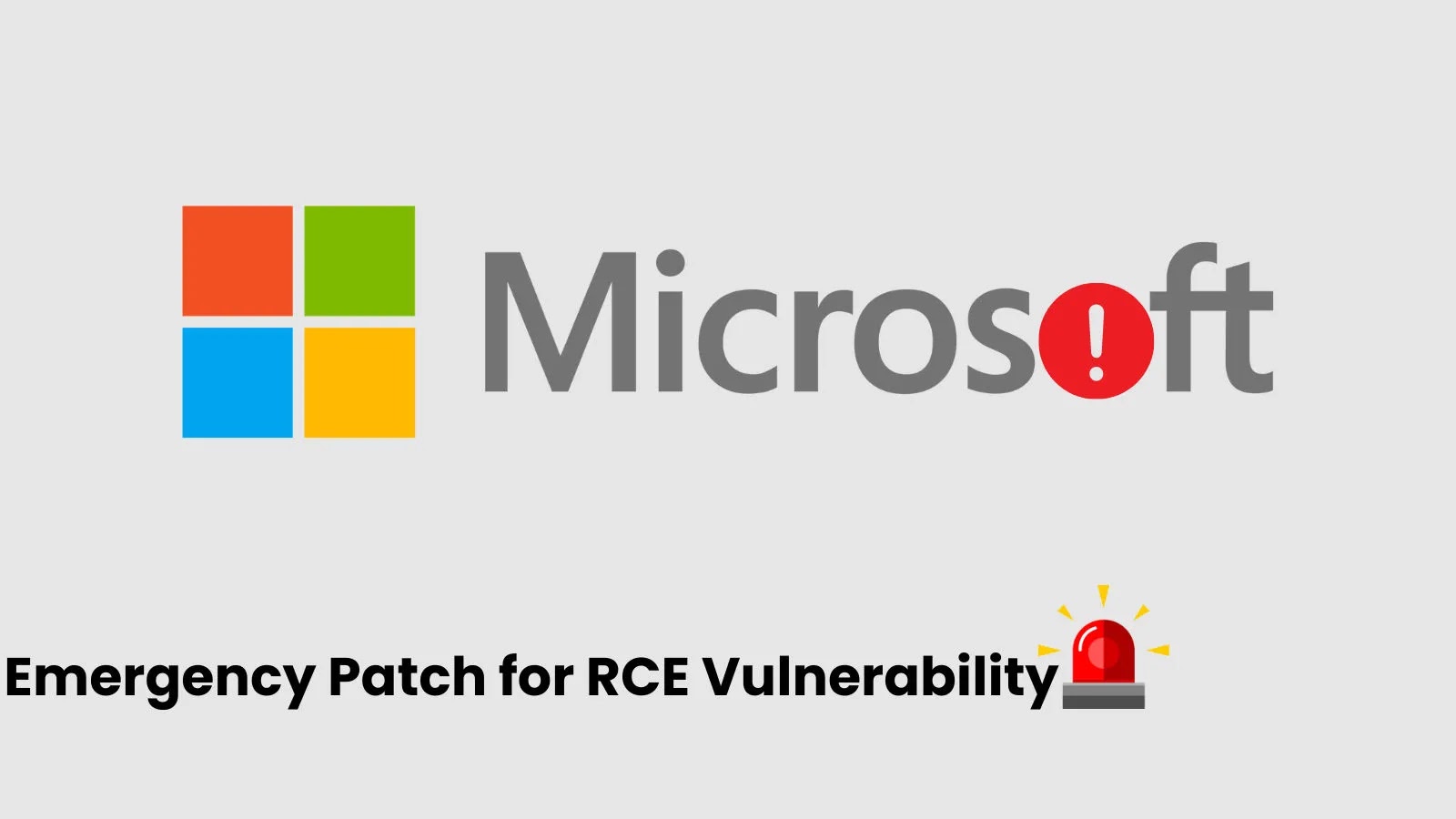
Microsoft Releases Emergency Patch For Windows Server Update Service RCE Vulnerability
In the fast-paced world of cybersecurity, vigilance is not just a best practice; it’s a necessity. Microsoft has once again demonstrated its commitment to securing its ecosystem by releasing an urgent, out-of-band patch. This critical update addresses a remote code execution (RCE) vulnerability within the Windows Server Update Services (WSUS), a service many organizations rely on for managing software updates efficiently.
Understanding the WSUS RCE Vulnerability: CVE-2025-59287
The recently identified vulnerability, tracked as CVE-2025-59287, poses a significant threat to Windows Server environments. This RCE flaw within WSUS stems from a critical weakness: the deserialization of untrusted data in a legacy serialization mechanism. For those managing enterprise networks, this detail is particularly concerning.
Deserialization vulnerabilities occur when an application attempts to reconstruct data that has been serialized (converted into a format for storage or transmission) from an untrusted source. If malicious input is crafted during this process, an attacker can leverage it to execute arbitrary code with the privileges of the affected service. In the context of WSUS, this means an unauthorized attacker could potentially gain control over the server, leading to devastating consequences for the entire network.
The Immediate Threat: Remote Code Execution Over the Network
What makes CVE-2025-59287 exceptionally dangerous is its capacity for remote code execution (RCE) over the network. This isn’t a vulnerability requiring local access or complex social engineering; an attacker could exploit this flaw remotely, potentially bypassing existing perimeter defenses. The ability to execute arbitrary code implies full control over the compromised WSUS server, offering a gateway to other systems within the network, data exfiltration, or even the deployment of ransomware.
Organizations using WSUS for patch management, especially those with publicly accessible WSUS servers, are at heightened risk. The implications of such a compromise can range from service disruption and data breaches to complete network takeover, underscoring the urgency of applying the provided patch.
Microsoft’s Swift Response: An Emergency Out-of-Band Patch
Recognizing the severity of CVE-2025-59287, Microsoft promptly issued an out-of-band emergency patch. Released on October 23, this unscheduled update highlights the critical nature of the vulnerability, falling outside the typical monthly Patch Tuesday cycle. Out-of-band patches are reserved for severe security issues that require immediate attention to prevent widespread exploitation.
This rapid response by Microsoft provides system administrators and IT security professionals with the necessary tools to fortify their defenses against this specific threat quickly. Timely deployment of such patches is paramount in mitigating potential risks and maintaining the integrity of IT infrastructure.
Remediation Actions: Securing Your WSUS Servers
Given the critical nature of this vulnerability, immediate action is required for all organizations utilizing Windows Server Update Services. Proactive patch management is the most effective defense.
- Immediate Patch Deployment: Systems administrators should prioritize the installation of Microsoft’s emergency patch on all affected WSUS servers. Ensure that all WSUS instances, regardless of their network exposure, receive this critical update without delay.
- Verify Patch Installation: After applying the patch, verify its successful installation through standard update management tools or by checking the update history on individual servers.
- Network Segmentation Review: Assess and strengthen network segmentation. If possible, isolate WSUS servers from direct internet exposure or sensitive internal networks to limit the blast radius if a compromise were to occur.
- Regular Security Audits: Conduct frequent security audits and vulnerability scans of your WSUS infrastructure to detect any potential weaknesses or signs of compromise.
- Monitor WSUS Server Logs: Implement enhanced logging and monitoring for your WSUS servers. Look for unusual activity, failed authentication attempts, or unexpected service behavior that could indicate an attempted or successful exploit.
Tools for Detection, Scanning, and Mitigation
| Tool Name | Purpose | Link |
|---|---|---|
| Microsoft Update Catalog | Locate and download specific security updates by CVE or KB number. | Microsoft Update Catalog |
| Endpoint Detection and Response (EDR) Solutions | Monitor for and respond to suspicious activities indicative of RCE attempts post-patch. | (Varies by vendor, e.g., Microsoft Defender for Endpoint) |
| Vulnerability Scanners (e.g., Nessus, Qualys) | Identify unpatched systems and other potential vulnerabilities across your network. | Tenable Nessus |
| Security Information and Event Management (SIEM) Systems | Aggregate and analyze logs from WSUS servers and other systems for threat detection. | (Varies by vendor, e.g., Splunk, Microsoft Sentinel) |
Conclusion
The release of an emergency patch for CVE-2025-59287 underscores the persistent and evolving threat landscape. The deserialization RCE vulnerability in WSUS presents a critical risk that demands immediate attention. System administrators must prioritize patching all affected Windows Server Update Services instances to safeguard their networks against potential remote compromise. Staying informed, acting swiftly on critical updates, and maintaining robust security practices remain the cornerstones of effective cybersecurity.





